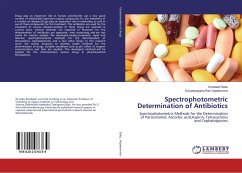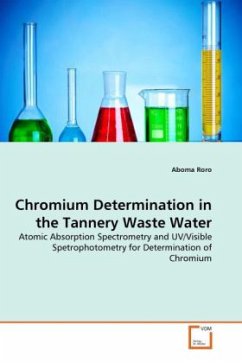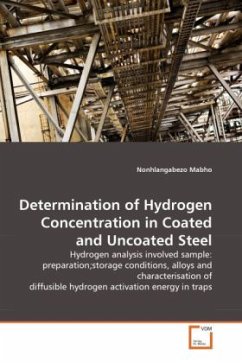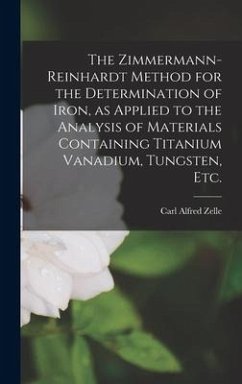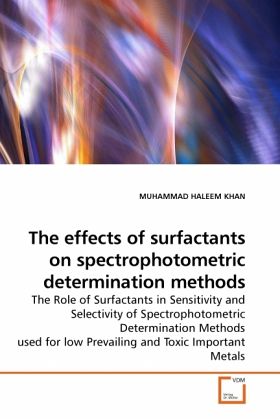
The effects of surfactants on spectrophotometric determination methods
The Role of Surfactants in Sensitivity and Selectivity of Spectrophotometric Determination Methods used for low Prevailing and Toxic Important Metals
Versandkostenfrei!
Versandfertig in 6-10 Tagen
45,99 €
inkl. MwSt.

PAYBACK Punkte
23 °P sammeln!
Rapid, selective, more sensitive and well improved spectrophotometric determination methods were developed for low prevailing economically important metals (Zn, Al, Th U, Zr and some toxic metals (Cd , Cr, Ni, Pb) in the presence of surfactants. Suitable chromogenic reagents were used for these determinations. A series of experiments were performed for optimization of important parameters regarding the ternary complexes of the selected metals, organic reagent and surfactants.The reported methods were successfully applied for determination of selected metals in water samples, pharmaceutical for...
Rapid, selective, more sensitive and well improved spectrophotometric determination methods were developed for low prevailing economically important metals (Zn, Al, Th U, Zr and some toxic metals (Cd , Cr, Ni, Pb) in the presence of surfactants. Suitable chromogenic reagents were used for these determinations. A series of experiments were performed for optimization of important parameters regarding the ternary complexes of the selected metals, organic reagent and surfactants.The reported methods were successfully applied for determination of selected metals in water samples, pharmaceutical formulations, synthetic mixtures and Standard Reference Materials. The results were found in good agreement with the reference values. With the use of surfactants in the existing methods, colour reaction helped in improving numerous remarkable properties such as molar absorption coefficient, expansion of determination range, large bathochromic shift, selectivity, sensitivity and stability of the complexes. The introduction of surfactants in existing methods helped in easy and comparatively accurate determination of selected metals which otherwise would not be possible by ordinary methods.




